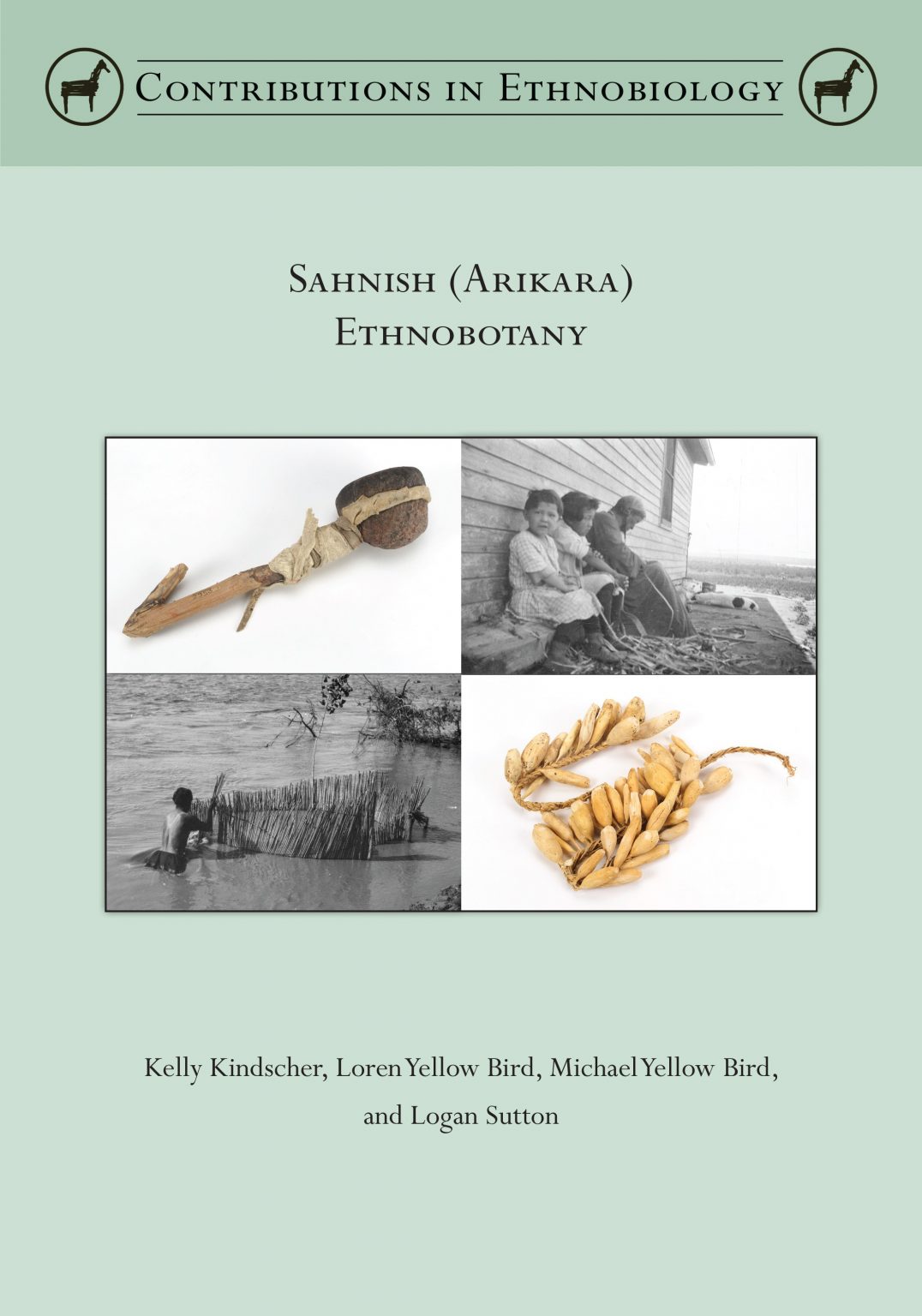Sahnish (Arikara) Ethnobotany
We worked on a project that has resulted in a book by this title that describes the traditional use of wild plants among the Arikara (Sahnish) for food, medicine, craft and other uses. The Arikara grew corn, hunted and foraged, and traded with other tribes in the Arikara Territory of the northern Great Plains (see map below). Their villages were located along the Missouri River in northern South Dakota and North Dakota. Today, many of them live at Fort Berthold Reservation, North Dakota, as part of the MHA (Mandan, Hidatsa, Arikara) Nation.

Arikara Burden Basket
A traditional Arikara burden basket with burden strap/tumpline made bySteštAhkáta of box elder (the white splints) and red-brown splints, which are made of the dried inner bark of peach leaf willow (Salix amygdaloides), to make the artistic pattern. These baskets were used for carrying ears of corn, or harvested plums or chokecherries, to the village. Melvin Gilmore collected this basket and it is archived at the Smithsonian Institution.
The book is authored by Kelly Kindscher, Loren Yellowbird, Michael Yellowbird, and Logan Sutton. We document the use of 106 species from 31 plant families (add link from here to the list which is an attached Excel file), based primarily on the work of Melvin Gilmore, who recorded Arikara ethnobotany from 1916 to 1935. Gilmore interviewed elders for their stories and accounts of traditional plant use, collected material goods, and wrote a draft manuscript, but was not able to complete it due to debilitating illness. Fortunately, his field notes, manuscripts and papers were archived and form the core of the present volume. Gilmore’s detailed description is augmented here with historical accounts of the Arikara gleaned from the journals of Great Plains explorers—Lewis and Clark, John Bradbury, Pierre Tabeau, and others. Additional plant uses and nomenclature is based on the field notes of linguist Douglas R. Parks, who carried out detailed documentation of the tribe’s language from 1970-2001.
Although based on these historical sources, the present volume features updated modern botanical nomenclature, contemporary spelling and interpretation of Arikara plant names, and color photographs and range maps of each species. Kelly Kindscher collected and assembled the historical Gilmore materials; Logan Sutton contributed the Arikara spellings and linguistic analyses; and, Michael and 18Yellow Bird—Arikara themselves—provided the cultural context. The work serves as an important regional ethnobotany of the Arikara Tribe, one of the most influential on the Northern Plains, and should be of great interest to ethnobotanists, ethnomedical practitioners, historians, and other Indigenous Peoples. More importantly, this book is for the Arikara people of all ages as documentation of, and reconnection to, their cultural heritage.
The book is currently being published by the Society for Ethnobiology

The Sahnish (Arikara) Ethnobotany Book Press Release (PDF)
Learn more about Melvin Gilmore’s life and work with the Arikara

Arikara Territory Map
Before the Arikara Nation was forced onto the Ft. Berthold Reservation with the Hidatsa and Mandan Nations, they accessed an extensive territory surrounding the middle Missouri River region. The core Arikara Territory, in dark purple, is the most intensively used area, and is composed of land used frequently, up to 40 miles from their villages. The village sites of the middle Missouri region show the most extensively used territory known and these are divided into six historical periods based on dated artifacts.